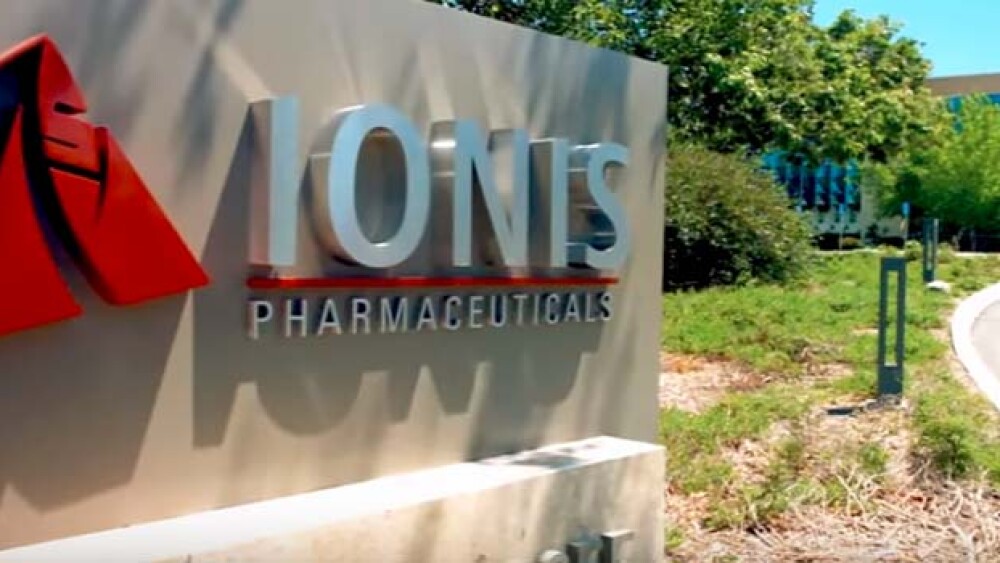Ionis Pharma released new data from its Phase III NEURO-TTR trial with inotersen in patients with hereditary TTR amyloidosis with polyneuropathy.
Ionis Pharmaceuticals released new data from its Phase III NEURO-TTR trial with inotersen in patients with hereditary TTR amyloidosis (hATTR) with polyneuropathy. The data was presented at the 142nd annual meeting of the American Neurological Association (ANA) in San Diego.
Ionis indicated that patients treated with inotersen had a mean 19.73-point benefit in the mNIS+7 co-primary endpoint after receiving the drug for 15 months, compared to those on placebo. A statistically significant benefit in mNIS+& was also seen at eight months.
The company said that side effects of thrombocytopenia and renal events seen were “monitorable and manageable with routine blood and urine testing.”
John Carroll, writing for Endpoints News, notes that Ionis is in a race with Alnylam to come out with therapies for hATTR with polyneuropathy. “We don’t know yet what Alnylam’s numbers are,” Carroll writes, “though plenty of analysts are willing to give them the edge in the race—and even though Ionis can rely on a much more easily used therapy, with a subcutaneous injection compared to an infusion process. Delivery, though, is a distant second compared to safety, and we still have a lot more to learn on that score from Ionis.”
Ionis says the problems are “monitorable and manageable,” but the question is whether investors will go along with that theory. The first European ATTR Amyloidosis Meeting for Patients and Doctors will be held on Nov. 2 and full data will be released from both companies.
“The pivotal inotersen data presented today represent new hope for patients suffering with hATTR,” said Annabel Wang, associate professor of neurology at the University of California, Irvine, School of Medicine, in a statement. “A 20-point benefit in mNIS+7 is unprecedented and could mean the difference between the ability to walk and being confined to a wheelchair for patients suffering from this debilitating and fatal disease. Based on benefit observed in neurological and quality of life endpoints, inotersen treatment has shown the potential to effectively change the relentless progression of this disease and offers a convenient, at-home administration method, providing patients further liberation from the burden of hATTR.”
Individuals with hATTR amyloidosis have a genetic mutation that causes the TTR protein, manufactured in the liver, to have an abnormal structure. As a result of the misfold, it accumulates in the heart, nerves and GI tract, which can cause debilitating symptoms. Depending on which organ the protein accumulates in, symptoms can include loss of sensation, limb weakness and pain, diarrhea, constipation, nausea and vomiting, heart-related problems, and eye, kidney and thyroid disease.
In addition to the hATTR data, Ionis presented data on 11 platform and poster presentations at the ANA meeting, including highlights from its Spinraza (Nusinersen) for spinal muscular atrophy.
“Ionis’ leadership in neurodegeneration is well highlighted at ANA,” said C. Frank Bennett, senior vice president of research and leader of the neurological disease franchise at Ionis, in a statement. “The programs featured at this medical meeting presented by us and our collaborators validate the breadth and potential impact of our neurological disease franchise. We are rapidly expanding and advancing our neurological disease pipeline, adding more innovative drugs, each with the potential to transform the treatment of severe neurological and neurodegenerative disease.”





